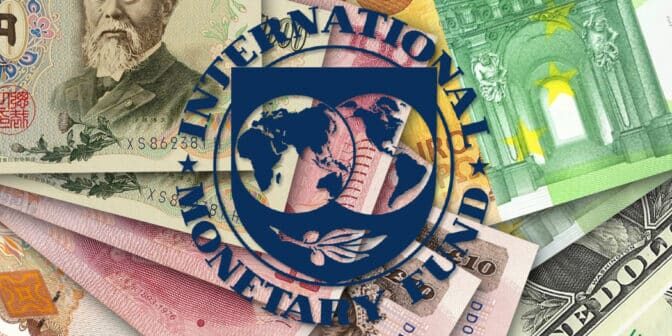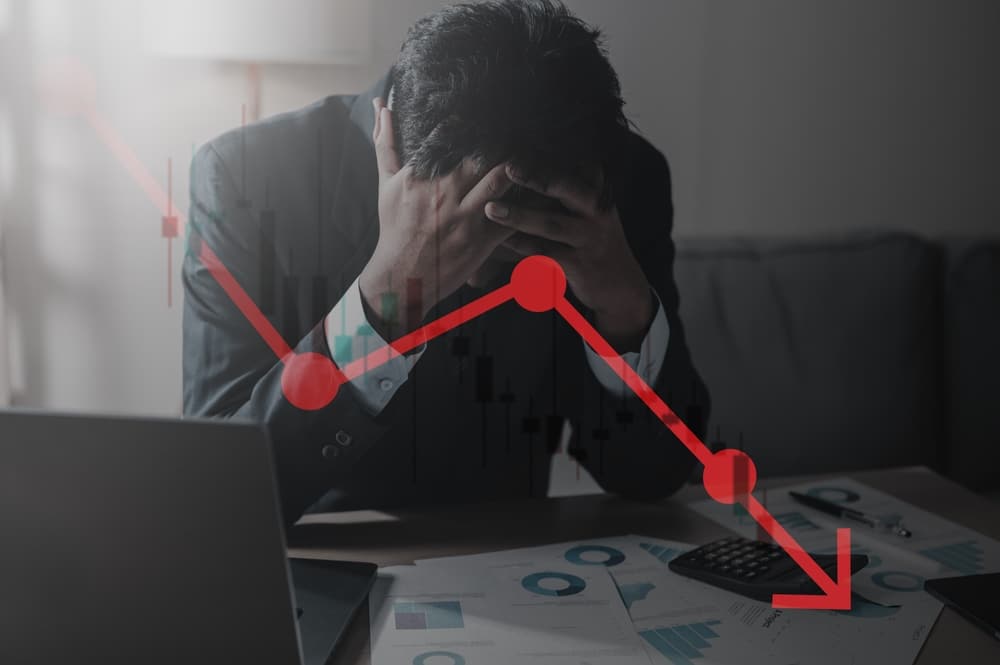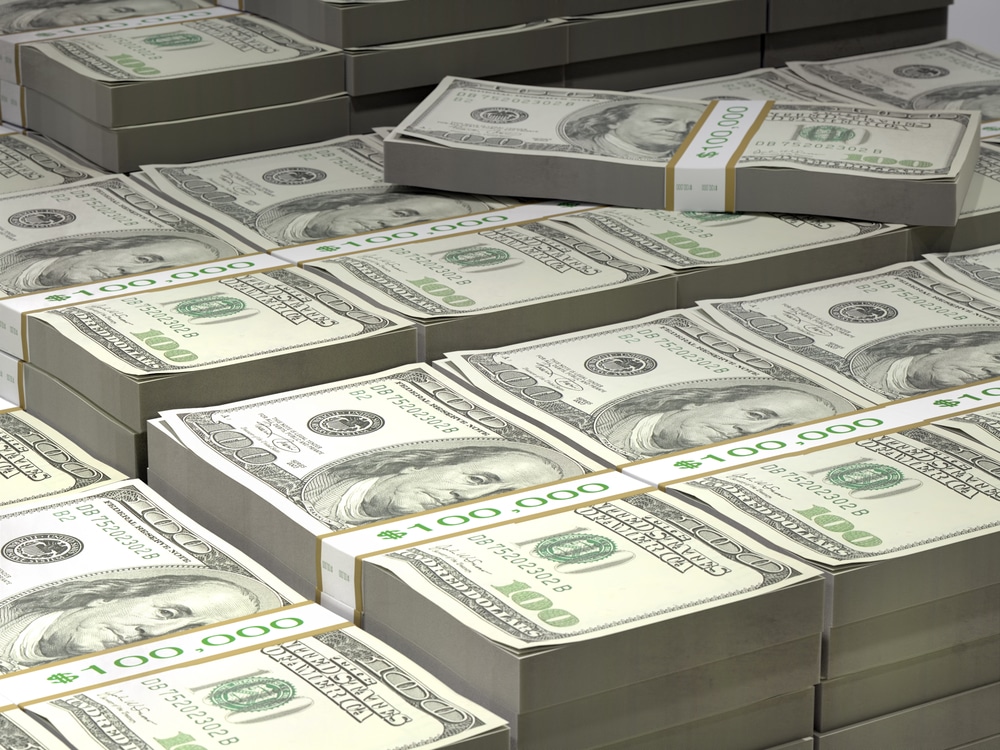
It’s Just a Matter of Time Before The IMF & e-SDRs Topple the US Dollar
"The urgent need for a geopolitically “fair” monetary system is becoming more pronounced," explains People’s Bank of China governor, Zhou Xiaochuan.
He also suggests the IMF’s Special Drawing Right (SDR), which their second amendment of the body’s Articles of Agreement asserts should become the world’s “Principle Reserve Asset,” beating out the US Dollar!
As we’ve seen over the last few decades, the shift toward a more multipolar “world order” has not facilitated fair trade. In fact, it has become more dollar-based and debt-driven: fertile ground for ever-increasing trade conflict.
Have you heard of the Triffin Dilemma? In 1959, a Belgian-born American economist identified a paradox that more or less forecasted the doom of any currency (in our case, the US dollar) attempting to maintain global reserve currency status.
It goes like this: the US needs to supply international economies with an extra supply of dollars to satisfy their demand for reserve assets. But the US can’t do this unless it runs consistently large current account deficits. And last year, that deficit had reached $474 billion, which is 2.4% of the US GDP.
By agreeing to issue dollars as the world’s reserve currency, the US had put itself in a box: to keep the international economy moving, the US needs to put more dollars into circulation, which drives up domestic inflation.
What does this do? It drives up the dollar exchange rate, making US exports less attractive, weakening US export industries. Naturally, this causes trade deficits: one that works for most economies across the globe but not for the US.
But if the US decides to focus on domestic monetary policy, hence going against the initial agreement (to be the world’s reserve currency), it may work for the US, but it causes problems for the rest of the world.
Do you see the dilemma?
We now see the consequences of this agreement: in 2018, a high federal deficit of $833 Billion (4.2% of GDP), and a national debt of $21 Trillion (104% of GDP).
Unfortunately, President Trump’s “America First” policy has had a negative impact on the US status among its international peers. The recent tax cuts in addition to an increase in military spending prompted the IMF to issue a negative forecast on the US economy, estimating that by 2022, US net liabilities will reach 50% of its GDP.
Further exacerbating the situation, Trump’s trade war rhetoric increases fears that the US dollar may be used as a major part of the US economic arsenal in geopolitical disputes, creating volatility across the international monetary system, and hurting economies whose currencies are linked to the US dollar.
The only solution to this potential crisis is the creation of a world currency not issued by a single nation.
The IMF solution has been in place since the late 1960’s, yet it hasn’t scaled to the extent of global usage yet.
It’s called SDRs or (Special Drawing Rights): a derivative reserve currency that the IMF created in 1969, partly out of its mistrust for the US Dollar. In 2017, the dollar had fallen by 816 basis points against the SDR! To learn more about SDRs, check out one of our previous articles.
The main danger that SDRs pose is quite simple: it will cause the US Dollar to collapse.
Of course, that means the US government will not be able to finance its operations, including programs like Social Security. The stock market will also not react favorably should SDRs go into effect.
Investors, particularly those entering or nearing retirement, will bear the brunt of the impact. No social security, a major fall in equities investments, declines in the dollar’s purchasing power--it all looks bleak.
But there’s another solution, one that isn’t issued by a central bureaucracy: real money, or gold.
Considering the fact that China and Russia are looking to bypass the dollar using their own currencies, neither country would be able to do this without the backing of gold. And that’s why they’ve been buying gold at record levels.
In the end, between SDRs and gold, all one has to do is look at the history of fiat currencies to see that gold has always won. And although there is a reason to fear the fate of the US dollar, there’s no reason to fear SDRs if you are holding the only other “currency” that far exceeds SDR’s artificially-derived value.
But here is the problem. The following excerpt from Project Syndicate.
"Yet the SDR is not used widely enough to serve as a major international reserve currency. According to a Palais Royal Initiative report, a key way to raise the SDR’s global standing is through “regular allocations of SDRs under appropriate safeguards” or even allocations “in exceptional circumstances.” The report also calls for the IMF to work with the private sector “to explore ways in which the SDR could be more widely used in private transactions.”
A key hurdle for the SDR has always been the geopolitical interests and priorities of the reserve-issuing central banks (not just the US, but also the eurozone, China, Japan, and the United Kingdom). But the advent of cryptocurrencies may offer another way: the private sector can work directly with central banks to create a digital SDR to use as a unit of account and store of value.
Such an “e-SDR” would, in a sense, be the quintessential reserve asset, because it would be fully backed by reserve currencies, in the IMF-determined ratio. The supply of e-SDRs would be completely dependent on market demand.
Of course, to enable a gradual shift from the US dollar to an e-SDR as the dominant international reserve currency, a sufficiently large e-SDR-denominated money market would need to be created. To that end, a politically neutral body, owned by the private sector or central banks, should be established to issue the asset. Participating central banks and asset managers would then have to swap their reserve-currency holdings for e-SDRs.
Once the private sector comes to view the e-SDR as a less volatile unit of account than individual component currencies, asset managers, traders, and investors could begin to price their goods and services, and value their assets and liabilities, accordingly. For example, the Chinese government’s massive Belt and Road Initiative could be conducted in e-SDRs. In the longer term, an international financial center, such as London or Hong Kong, could spearhead experimentation with e-SDRs using blockchain technology, with special swap facilities being created to make the asset more liquid.
Another imperative would be to create an e-SDR-denominated debt market, which would appeal to countries that want to avoid getting caught in the crossfire between reserve-issuing countries. Multinational firms and regional and international financial institutions should provide the needed supply of assets. On the demand side, e-SDR-denominated long-term bank debts could be used by pension funds, insurance companies, and sovereign-wealth funds.
The e-SDR-denominated debt market would even be good for all reserve currencies – except the US dollar – as their weight in determining the asset’s value exceeds their current shares in foreign-exchange markets. In the longer term, the e-SDR’s rise could put added pressure on the US to rein in its spending.
The rise of cryptocurrencies has created a unique opportunity for market forces to spearhead a shift toward a truly neutral reserve asset. With US leadership more unpredictable than ever, it is an opportunity that should not be missed."
Now is the time for non-CUSIP gold and silver. Call us today to prepare for the global shift from USD to e-SDR.











